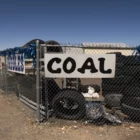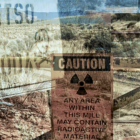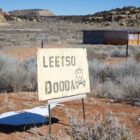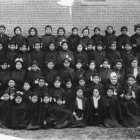In San Juan Basin, cultural, economic bonds slow fossil fuel transition
|
Farmington, New Mexico, is a city tied to its boom-and-bust economy, where commerce and industry take a prominant place in the urban landscape. Credit: Jeremy Wade Shockley / for the Energy News Network
Norman Norvelle’s family rolled into New Mexico’s San Juan Basin in 1957, when he was just 11, their belongings loaded into a 1953 Chevrolet sedan and an aging, half-ton pickup truck.
At the time, Farmington — the region’s largest town — still lived up to its name. “It was a beautiful place,” Norvelle said. “There was orchards and truck gardens everywhere.” Norvelle remembers driving with his family north into Colorado and up to Kennebec Pass, high in the La Plata Mountains, and gazing out across the Basin. The air was so clear then he could see the Sandia Mountains near Albuquerque, some 200 miles to the south.
It wouldn’t stay that way for long. Lying deep underneath the juniper and piñon forests, shrub-covered mesas and cottonwood studded river bottoms are vast stores of oil and natural gas, fossilized organisms that once plied the shallow inland sea that spread out across the region some 75 million years ago, and a thick bed of low sulfur coal, the leftovers of fecund and sultry shoreline swamps.









